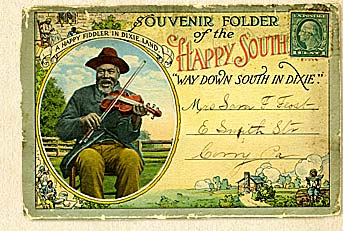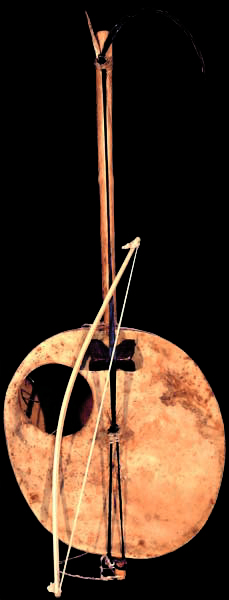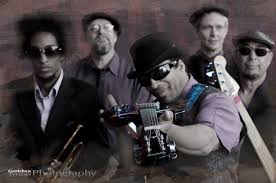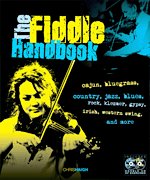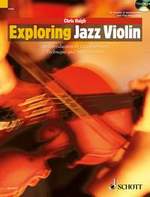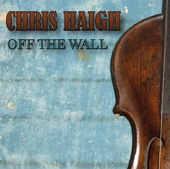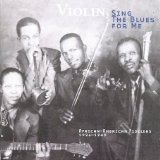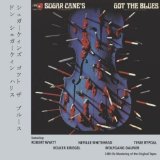
MENU TO FIDDLE STYLES:
VISIT THE FIDDLE CHANNEL FOR FREE FIDDLE LESSONS, TUTORIALS, AND WORKSHOPS!
Blues Fiddle learn Blues Violin on The Fiddle Channel! WHERE ARE ALL THE BLUES FIDDLE PLAYERS?
At the turn of the last century, when the blues was in its formative years, fiddle was among the primary instruments used by the rural blacks who were performing in this style, and by 1930 over 50 different black blues fiddle players had their work on wax.
Even as the guitar was rising in prominence, many of the star players such as Lonnie Johnson and Big Bill Broonzy played both guitar and fiddle. In many ways the violin is the ideal blues instrument; closest to the human voice, capable of great passion, and able to deal easily with the uncertain and sinuous areas “between the notes”, all of which are crucial to the blues. Yet by the end of the depression years, in the mid 30’s, the blues fiddle was virtually a thing of the past, leaving no trace but some dusty old recordings. Why bother, then, with blues fiddle at all in this day and age?. Where are the blues fiddle tune books, the blues fiddle contests, blues fiddle festivals? Pretty thin on the ground, to put it mildly. However, although in itself very much a minority genre, blues remains a core element of rock, country, western swing, bluegrass and jazz, and without it you will never really get to grips with any of these styles.
WATCH; THE STORY OF BLUES VIOLIN
THE STORY OF THE BLUES
The use of slaves in North America began in the mid 17th C on the tobacco plantations of Maryland and Virginia, and soon spread throughout the southern states. A highly profitable triangular trade developed; ships laden with goods sailed from England to West Africa, where the goods were exchanged for slaves. They then sailed the “Middle Passage” to the Carribbean and America, exchanging the slaves for money or more goods, before returning to England.
Initially, the slaveowners sought to prevent music among the slaves. Drumming, in many west African tribes a highly developed art, was banned; it was thought that it could be a focus of dissent and rebellion, and a medium for passing secret messages. Other forms of music however were soon recognised as having the opposite effect- a way of pacifying and placating the slaves. The banjo, based on a group of plucked stringed instruments found in west Africa quickly became popular on the plantations as an accompaniment for singing of semi-improvised songs which the whites found comical. It was clear that the slaves had a good deal of natural musical ability, and that black musicians could entertain not only their fellows, but their masters as well. Thomas Jefferson, in 1784, stated that “they are more generally gifted than the whites, with accurate ears for a tune and time…the instrument proper to them is the banjar, which they brought thither from Africa”. The owners soon introduced them to European instruments, most notably the violin, which gained rapid popularity among the slaves. Some would have taught themselves to play the fiddle, but many were also given formal musical training by their masters, or learned in a church or choir.
One slave-holder wrote that “I have a good fiddler, and keep him well supplied with catgut, and I make it his duty to play for the negroes every Saturday night until 12 o’clock.”
By the 18th C black musicians were playing jigs, reels and fandangos as well as religious and classical music. In the 1880’s George Washington Cable was able to state” the banjo is not the favourite musical instrument of the negroes of the Southern States of America. Uncle Remus says truly that it is the fiddle.”
Emancipation in the 1860’s did not bring about great improvements to the lot of the southern blacks in America. The “Jim Crow” segregation laws, the sharecropping system, the all-white unions and the best efforts of the KKK all conspired to keep blacks overworked, underpaid, largely illiterate and virtually disenfranchised. Employment was mostly on cotton farms, in mines or factories, or on the railroads.
This was the period in which blues began to come together. The chief musical ingredients were
1. Sprituals; songs reflecting despair and sorrow, but looking towards a better life in the next world.
2. Secular songs; more down-to –earth and often humorous songs complaining of or mocking their oppressors.
3. Field hollers; not formal songs, and performed in a half shouted, half sung technique, these were improvised in the fields by the cotton workers.
4. Work songs. Similar in function to sea shanties performed by English sailors rowing or hauling ropes, these were repetitive songs with a strong rhythm used to coordinate the efforts of workers and take their mind off the strain and hardship. Such singing was already traditional among Africans working the land in their home countries.These then were the vocal background to the blues. Since the end of slavery there were now black musicians travelling the south, busking on street corners, playing for dances or performing in medicine shows. If they were solo they would often play the banjo or, increasingly the guitar to accompany their singing. String bands were also becoming common, where guitar, banjo, fiddle and possibly percussion such as bones would be played. Around 1900 someone discovered how to create melody by blowing into a jug; this became the start of a craze for “jug bands” in and around Memphis. Performance, both from the string bands and jug bands would often be accompanied by entertaining and humorous patter,
Whilst there was a good deal of crossover with the material and style of white southern musicians, there were certain distinctive characteristics of the black performers; their strong rhythmic sense and ease with which “hot” syncopated rhythms were introduced; the ease of improvisation; and the bending of notes between a major and a minor modality.
Origin of the blues scale
The origin of the blues scale has been the subject of much analysis and discussion. Conventional wisdom has it that African musicians were brought up using a pentatonic (five note) scale, and had difficulty singing or playing the raised thirds and sevenths they encountered in European music, instead bending the notes up. In his book “Savannah Syncopators; African Retentions in the Blues”, Paul Oliver dismisses this view as over-convenient, simplistic and patronising. Whilst pentatonic scales are common in West Africa, other scales including the “standard” 7-note diatonic scale are also used. Furthermore, it seems contentious to accept, as is customary, that negroes have enhanced natural musical ability, and at the same time to claim that they were unable to deal with the European 7-note scale.It was with the solo singer/guitarists that these elements first came together to form the blues. Many people have drawn parallels between the wandering bluesman of the late 19th/early 20th C, and the “griots” of west Africa. These were (and still are) musicians who travelled from village to village singing songs, heaping praise or sometimes mockery on their patrons, holding and exchanging the history of the tribes, and dispensing some kind of collective wisdom. As well as singing they played on stringed instruments resembling the banjo or fiddle. They were considered of low caste but were were often highly paid and were greatly valued for tribal celebrations of various kinds. In a curious parallel with fiddlers in Europe or America in conflict with the church, the Griots of Africa were seen as a threat by Islamic authorities, and were sometimes condemned as agents of the devil; they would not be buried in the cemetery, but somewhere outside under a baobab tree. Little wonder that links were drawn between this tradition and the legend of Robert Johnson, the wandering delta bluesman who is said to have sold his soul to the devil in exchange for his supernatural musical powers.
TRADITIONAL MUSIC IN WEST AFRICA; THE ROOTS OF THE BLUES?
The equatorial rainforest of West Africa was the source of many but by no means all of the slaves shipped to the Americas. Here the easy availability of many large-bolled trees made drums a natural choice of musical instrument. Drumming developed to a high art, with complex multiple rhythms, syncopation, call and response and extended improvisation all featured. These characteristics, whilst perhaps of relevance to the origins of jazz, have little contribution to make to the early blues, which apart from anything else relies largely on a steady, monotonous beat.
As you move further north from the equator the trees thin out and you enter the Savannah grasslands of Sub-Saharan Africa; Senegal, Gambia, Mali, Upper Volta, Niger and northern Nigeria. Here drumming is less prevalent, but stringed instruments, including spike fiddles and potential ancestors to the banjo are common. Music is performed by independent, professional minstrels, who travel from village to village, entertaining at weddings and other ceremonies. These Griots were described by the explorer Mungo Park, who noted that the musicians would improvise songs in praise of the village leaders or anyone else prepared to provide “solid pudding for empty praise” (what a wonderfully cynical turn of phrase!). The high, forced tones of the singing, with frequent breaks into falsetto, is not unlike the tone of many blues singers
The griot was a hereditary position, and the musicians sometimes reached a high level of virtuosity.AFRICAN SPIKE FIDDLES
The Halam of Senegal and Gambia is a five-stringed plucked instrument with a hollow wooden body and a hide resonator. Two melody strings and three drone strings are plucked with the fingernails. Senegal also has a Bania; a similar instrument but with a gourd body. Either of these could have led to the banjo; with the latter even the name is similar. Further east in northern Nigeria is a two-stringed lute like instrument, this time played with a rhino-hide plectrum.
The goge is a one-stringed stick fiddle found in different shapes and forms throughout west Africa. The name goge comes from its use in Niger, and by the Hausa and Yeruba peoples of Nigeria. In Ghana it is known as a gonje, and in Benin as a godie.
The body is typically made from a gourd with a lizard-skin facing. A thin stick neck holds a single horsehair string, connected over a bridge to the gourd. The bow is a curved piece of wood or metal, strung with horsehair. The goge is held almost horizontal on the lap. It is used in groups to accompany singing, and is often played with great virtuosity. Not unlike the fiddle in Europe and America, religious authorities often consider the goge to be the work of the devil. Modern-day exponents of the goge among the Hausa people include Audu Yaron Goge and Garba Liyo.
The kukuma is a smaller version of the same instrument.Another West African 1-string fiddle is the Riti. or Nyanyeru. Juldeh Camara, now resident in the UK but originating from the nomadic Falani people of the Sahel, tells how a spirit or djinni met his father in the forest, and taught him to play on a golden riti. The price of this gift was his father’s eyes, though the djinni sweetened the deal by giving him “the gift to see what others cannot see”. Juldeh became one of West Africa’s finest players on the instrument. He has toured and recorded with groups such as Ifang Bondi, Zubop Gambia and the Blind Boys of Alabama.
Whilst there is no suggestion that these African fiddles were played in America, blues historian Paul Oliver believes that slaves taken from this sub-Saharan region would have been those most likely to take readily to the European violin when given the opportunity on the American plantations.
Goge
By the turn of the century a format was becoming established of songs sung in a standardised format of three lines. The first line is sung over four bars of a major chord, then the same line is repeated but with the chord changing first to the subdominant then back to the root. A third, and different line concludes the verse, passing from the dominant back to the root
I'm going to leave baby, ain't going to say goodbye.
I'm going to leave baby, ain't going to say goodbye.
But I'll write you and tell you the reason whyThe simplicity and predictability of this structure is its biggest strength, allowing for easy improvisation of lyrics or solos, and easy composition of new songs. The sung melody is also simple and mostly pentatonic, but some of the notes, particularly the third, are flattened or bent as the chords change. This bending was mimicked on the guitar by touching the strings not with the fingers of the left hand, but with something like a penknife blade or the neck of a bottle, allowing the note to slide. The result was dark, deeply soulful, and to the trained classical ear, utterly bizarre.
WC HANDY- FATHER OF THE BLUES
This was the sound that was to so influence the so called “father of the blues”, WC Handy. Though the son of free slaves himself, Handy was educated and a classically trained musician; a cornet player, composer and orchestra leader. He famously describes how in 1903, at a Mississippi railway station, he saw a busker playing blues, bending the notes on the guitar with a penknife. It was, he later said, “the weirdest thing I ever heard”. He had already been exposed to fiddle music; his grandfather Christopher Brewer had fiddled at plantation dances, and the young Handy had enjoyed doing fiddlesticks while his uncle Whit Walker played fiddle at country frolics. He commented how in the old times “country gals and their mirthful suitors got as much enjoyment out of a fiddle at a breakdown or square dance as jitterbugs or rug-cutters get nowadays from a swing band” His own parents were strict church-goers, and disapproved of music for entertainment; when as a teenager he bought a guitar and joined a local blues band he had to keep it a secret. Despite this, he became a professional musician with a travelling minstrel show, eventually becoming a successful orchestra leader. Whilst by no means an “authentic” blues performer or innovator himself, his composition “Memphis Blues” was sensationally successful, shifting 50,000 copies of sheet music within a year. This was the big breakthrough not just for him, but for blues itself; here suddenly was a musical style which demanded some respect, not least for commercial reasons. Handy followed up his success with “Saint Louis Blues”, one of the best known of all blues songs. He continued songwriting, publishing and performing throughout the 1920’s and 30’s, and published various blues anthologies. His ensembles always included at least one fiddle, sometimes as many as three.
LONNIE JOHNSON AND THE EARLY BLUES FIDDLE PLAYERS
The record industry was quick to jump on the blues bandwagon, signing up many artists for its” race” labels. Among the performers to record were many fiddle players.
Lonnie Johnson was one of the most influential and prolific, cutting over 20 sides for the Okeh label, starting in 1925. He had already been a professional musician for a decade; having started with his family band, he had played string band music and jazz as well as blues. He performed on both guitar and fiddle, working with a popular band, the Mississippi Sheiks. Winning a blues contest in St Louis gave him his big break, the prize being the contract with Okeh. From here on he concentrated on the blues, working both as a bandleader and session man. He was best known as a pioneering virtuoso guitarist, but his violin playing, as heard for example on the Memphis Stomp, is powerful and expressive .
Lonnie Johnson
Another notable blues guitarist/fiddler was Big Bill Broonzy. He was born on a Missouri plantation in 1898, and was one of many players who started off with crude, home-made instruments: he explained to the song collector Alan Lomax: “Every night I would bring be some cornstalks together and I’d go out in back of the barn and rub them cornstalks together and make music and the children would dance. That was my “cornstalk fiddle”. I rubbed it hard when I wanted a loud tone and I rubbed it easy when I wanted to play soft. From this he moved up to a cigar-box fiddle, and finally a mail-order violin from Sears and Roebuck. To start with he mostly played music for white audiences-old time, breakdowns and waltzes, but when he moved to Chicago in 1920 there was already a big demand for blues; he took up the guitar and began a long and successful career as a blues singer. Although his dirty, muscular fiddling was heard on some of his early recordings, Broonzy has played little violin since. The blues historian Paul Oliver records having had the rare privilege of hearing Broonzy pick up a fiddle someone had left backstage at a concert in London: “During the next few moments that violin played notes it will never play again …with his powerful fingers twisting, sliding and releasing strings, Big Bill played pure alley fiddle, grinning broadly as the strangely remote sounds filled the room”
Another notable blues fiddler was Eddie Anthony, also known as “Macon Ed”; like Broonzy and Lonny Johnson, he had a broad musical background, including rags and country stomps as well as blues. A remarkable recording of his is the “Moanin’ and Groanin’ Blues”, where he scrapes and whines on the fiddle along with a sung chorus of, as the title suggests, wordless growls and groans from the singer, Joshua “Peg Leg” Howell. Another example of music so intense and bizarre it seems to have come from another planet.
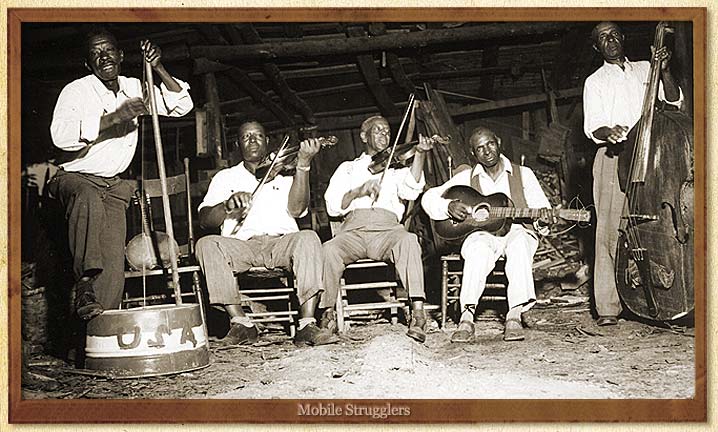
Blues fiddle of the period around 1900 to 1930 can be described as being earthy, energetic and rhythmic. The use of flattened and bending notes, and loose and flexible phrasing closely mimic the singing style. It was rarely slick and polished, but often exciting and impassioned. By the early 30’s over 50 different black blues fiddlers had been recorded, but the blues was changing. The hardships of life in the south led many blacks to move north in the 20’s and 30’s, to cities like Chicago, where there was more chance of factory work, and the repression and prejudice was at least less institutionalized. Blues was big in Chicago, but the new style developing there in the nightlclubs was loud and heavy, dominated by the newly developed electric guitar, often with piano, harmonica and drums. The fiddle, which had not yet been successfully amplified, had no place in this new sound, and as we have already seen people like Big Bill Broonzy abandoned the instrument in favour of the guitar. Many black fiddlers in the cities found work in small theatre orchestras, but the advent of recorded music on film, with the release of Al Jolson’s “The Jazz Singer”, put paid to these jobs almost overnight. From being one of the key instruments among black musicians in general and blues in particular, the fiddle went into rapid decline and virtually disappeared in these fields. For genres such as western swing, country and old time music the fiddle, for all the competition from new sounds, remained a potent symbol of “the good old days”. For the blacks there were no good old days, and the idea of misty eyed nostalgia for the early days on the plantations was laughable.
Despite all this, the violin remains a natural instrument for the blues, and it wasn’t much more than a decade after the depression years and the boom in Chicago blues that amplification of the violin became possible. There are three great black artists who held the torch for blues violin through most of the rest of the century; Papa John Creach, Don Sugarcane Harris, and Clarence Gatemouth Brown.
LATE 20TH CENTURY BLUES VIOLINISTS
Papa John Creach was born John Henry Creach in Beaver Falls, Pennsylvania in 1917. He began playing violin in Chicago bars in 1935, and then moved to LA in1945, making his living playing cabaret spots, ocean liners, and occasional film appearances; he described his profession modestly as "sawing wood".
In 1967 he met rock drummer Joey Covington, who was struck not only be Creach's playing but also by his great gentlemanly charm. The friendship led to "Papa John" recording and gigging with the band Jefferson Airplane, which later became Jefferson Starship, and the spinoff group Hot Tuna, a much more rootsy blues combo.
These collaborations lasted from 70 to 74, and left him with a ready audience for his own blues albums which followed, such as "I'm the fiddle man", "the Cat and the Fiddle” and perhaps his best work, “Papa Blues”, released in 1992.
He played with a warm, breathy tone; restrained and controlled, but with a rough edge. He often used an aggressive tremello and had a wide, insistent vibrato. In his solos a lick would be played repeatedly, punctuated with frequent trills and wild upward swoops.
Papa John Creach
Don “Sugarcane” Harris, from Pasadena, California was born in 1938, and by his teen was playing R&B guitar and violin with Dewey Terry under the name Don and Dewey. In the 60’s they separated, and Harris began to concentrate on electric blues violin. He made many appearances as a sideman, with artists such as John Mayall and the Bluesbreakers, Johnny Otis, John Lee Hooker and Little Richard. He is probably best remembered, though, for his work with Frank Zappa in the 1970’s, notably the grinding, take-no-prisoners rocking blues “Weasels ripped my Flesh”. Here he makes the most of his raw, shredding sound, frequent “harmonica” trills, tremelo and double stops. His playing can be fast and fluent, but is most effective on slow numbers, where his distinctive thin tone and shaky vibrato come across as vulnerable and sensitive.
One of his lesser known but most interesting recordings was the “New Violin Summit” recorded in Germany in 1971, alongside Jazz violinists Jean Luc Ponty (veteran of the original Violin Summit), Michael Urbaniak from Poland, and the Austrian gypsy jazz fiddler Nipso Brantner.
Sugarcane Harris
Clarence “Gatemouth” Brown was born on Louisiana but raised in Texas, and the musical influences of those two states are clear in his music; along with the blues he enjoys playing zydeco, Cajun, swing, country and R&B. Although frequently pigeonholed as a bluesman, and with T-Bone Walker as his biggest single influence, Gatemouth Brown referred to his music as “American music, Texas style”. He was a highly versatile musician; alongside the fiddle, he also played a lot of electric guitar, as well as singing and playing some mandolin and harmonica. He was larger than life, gregarious character, and I had the good fortune to meet him in the 80’s. Along with my group I was giving a workshop on blues and western swing at a British festival. Halfway through in strode Gatemouth, and with a huge grin grabbed a fiddle and proceeded to show the audience how music was really played in Texas.
He was a popular R&B artist in the period 1948-58, having hits with swinging numbers such as Okkie Dokie Stomp and Gate’s Salty Blues. His first big break had come in 1947 when T-Bone Walker was taken ill during a concert in Houston. Gatemouth stepped onto the stage, grabbed a guitar and went on to steal the show with a number he composed on the spot.; the promoter was so pleased he offered him a job right there.After a dry spot in the 60’s, his career took off again when in the early 70’s he was invited on the first of many tours of Europe, where his genial personality won him many friends. He continued to tour extensively up to his death in 2005, collecting a grammy and a pile of other awards along the way. A fine example of his playing style can be heard on Song For Renee from his 1983 One More Mile album- also a popular feature of his live set. He plays clean jazzy lines in unison with the wind section, then launches into a playful solo, full of rhythmic excitement. His scratchy, attacking tone is tempered by a very minimal vibrato, but he is not short on technique, as demonstrated by the dramatic solo fiddle cadenza which swoops fearlessly up into the higher positions.
Clarence “Gatemouth” Brown
PLAYING BLUES VIOLIN
There are three different aspects to blues. Firstly, it's a sequence of chords, usually 12 bars in length. Secondly, it's a scale containing certain flattened "blue notes"; and thirdly it's a feeling which can be applied to music, a passion and angst which finds its expression through playing the blues.
The blues sequence
Most jazz tunes are 32 bars long, typically with an 8-bar line (the A) repeated twice, an 8-bar B section, and a reprise of the A. Blues is different, having typically just 12 bars which are repeated through the song.
The most basic sequence is 1/1/1/1/ 1v7/1v7/1/1/ v7/1v7/1/v
It therefore consists of just three chords; the root (1), subdominant (1v)
and dominant (v7) . From the 1930's onwards, numerous modifications and refinements have taken place;
A slightly more sophisticated version, a "jazz" blues is
1/1v7/1/17/ 1v7/1v7/1/v17/ 11m7 v7/1/11m7-v7/There is also a minor blues;
1m/1vm7/1m7/17/ 1vm7/1vm7/1m7/1m7/ b1v7/v7/1m/11m7-v7/Further variations include the bebop blues and a complex descending blues. So when someone says, "ok, lets play a blues in G", how come everyone knows what to do, and they don't have to sit down and discuss the chord sequence beforehand? Basically, assuming it's major, then all the different versions are interchangeable; even if every member of the band is expecting something different, with a little give and take it will always sort itself out.
The blues scale for violin
There is some debate about what is the blues scale. The most commonly used scale used to teach the blues is, for a G major blues, G Bb C Db D F. I call this the MINOR BLUES SCALE. It's the scale that guitarists use, and one of the first patterns that any lead guitarist will learn. You will notice several things about this. It has three flattened or "blue "notes- the flattened third (Bb), the flattened fifth (Db) and flattened seventh (F natural). The most striking feature is that it places a minor third against a major chord, creating an immediate tension; it is this tension which is the driving force and emotional heart of the blues. The scale as a whole is a minor pentatonic plus one extra note, the Db; it is sometimes called the minor blues scale.
Try playing the scale against each chord of the blues sequence, and you will see that it works all the way through; any lick you create from the scale can be repeated as many times as you like throughout the sequence.Blues is an essential element of jazz, and in fact blues lick are very often used in jazz tunes which do not follow the blues chord sequence. For this reason it is very useful to learn another scale as follows; G A Bb B D E. I call this the MAJOR BLUES SCALE. This scale contains both the flattened 3rd (Bb) and major 3rd (B). This allows you to play the scale over a major key , moving in and out of the minor feel at will; in fact you can bend up and down between the Bb and B in a very satisfactory way (here fiddle players have a big advantage over pianists, who find themselves hammering two adjacent notes at once, as if trying to get at the note in the crack between!) This scale will allow you to play blues riffs in a "sunny" sounding tune without colouring the whole tune too much.
Because it is based on the major pentatonic, it is an easy addition to a lot of shapes and patterns you will already have become familiar with. The scale does not include the flattened fifth or seventh; on a major tune you'll have to add these in when you need them.
And what about using this scale in a minor key? Just as with the ordinary pentatonic, the same notes will work for the relative minor, so the G major blues scale will work for an E minor tune. But now look at the intervals. The Bb is now the flattened fifth, which can bend up to the natural fifth (B), and the D is now a flattened seventh. So although you can no longer call the third a blue note (since it's flat in the key of Em anyway), you now have two other blue notes to play with.Here's a short video where I demonstrate the blues scales.
Many contemporary players approach blues violin as effectively an imitation of blues guitar style. This means plying the same kind of licks as a guitarist, bending notes and playing riffs in the same way that a guitarist would. Playing acoustically, false harmonics are an effective way to imitate guitar feedback. Better still, if you use an electrified violin you can play through effects pedals- distortion, wah, echo and so on. Pete Hartley( below), using a six-string violectra, achieves a sound uncanilly like a guitar.
CONTEMPORARY BLUES VIOLIN
I talked to a few contemporary blues violinists to see if theew is still a thriving scene.
PERRY LEANDRO (NEW YORK)
Perry Leandro plays with The Killer Blues Band along with Mike Antol on drums and Jeff Kiseli on Hammond style organ.
Can you tell me about your band?We have been together for almost 10 years. Although we do play in New York City, we consider ourselves a blue collar New Jersey bar band. We are members of a fine organization call The Jersey Shore Jazz And Blues Foundation, JSJBF.org.
How do you get the sound we hear on the youtube clip?In our youtube clip I ran my violin through a Roland mirco cube amp that pluged directly into the board, with some gain, delay and wah-wah.
How did you get into blues? I have played guitar since 1965, and I studied jazz at Berklee in Boston in '74 and '75. I first heard Grappelli 20 years ago and decided to try violin at the ripe old age of 33. As I studied, I just realized that blues played in a "guitaristic" way sounded cool and people liked it.
What's your approach to improvising? Many years ago a friend of mine took a guitar lesson from the late,great Joe Pass, who said that his harmonic thinking is very simple: major, minor and II/V . I like this straight ahead approach and try to stick with it. Personally I am more into the rhythmic aspect of jazz and blues, instead of complex harmonies. For the most part, I'd much rather bend a long note than than run up and down scales.
PETE HARTLEY (UK)
Pete Hartley is a professional violinist based in the West Midlands in the UK, best known for his work with Barbara Thompson's Paraphenalia. I asked him a few questions about his blues playing:
Firstly it would be useful to know what specific effects you’re using on the clip, and what the backing track is The effect processor is a Pod X3 live, and I'm using a patch called "purple" which I think is supposed to emulate the Prince sound on Purple Rain. The backing track is one of 4 blues in E tracks I had made to go with my "How to play the Blues violin in E" DVD. That particular track is based around a stormy monday Almans brothers style.
Do you consider yourself primarily a jazz player? I think the honest answer is that stylistically I am a Blues player since whether I am playing Jazz or bluegrass I am really playing blues (although bebop influenced Blues).
Do you differentiate between the major blues scale (ie major pentatonic plus a flattened third) and a minor blues scale (with flattened third, fifth and seventh, no major third)?
I don't think in this way a lot of the time! I do play a lot of flat 5s. I worked out my own pentatonics (which are probably the same as everybody else's) I see it more like I could play this note or I could play that one to make it more darker or more happier.
To what extent do you deliberately imitate the guitar in your blues playing? When I've got a guitar sound going then I do to a great extent imitate a guitar, but then I have never understood why fiddle players want to fiddle de dee stuff, I mean you don't expect a sax player to do that nor do expect someone playing a Les Paul through a Marshal stack to do it. So having grown up listening to the Beatles, Stones, Hendrix then later Stanley Clark and Santana I would have that influence when I play blues.
Who, if anyone, has been an influence on your blues playing? The violinists that have influenced all of my playing including Blues are Shankar, Ponti, Stuff Smith, Vassar Clements, also I learnt one lick from Sugar Cane Harris.
Do you do many gigs as a blues player, and if so what’s the band? I don't play blues gigs as such, I occasionally join in on a blues session, but I play in a bluesy style on all my gigs except some funerals. My band is usually an apple laptop, although occasionally I have a jazz trio and was up until a couple of months ago been part of a bluegrass band.
LIONEL YOUNG (USA)
Until recently, I have to admit I'd never heard of Lionel Young. While researching my video "The story of Blues Violin" I asked on a blues facebook group who peope would recommend as contemporary blues violinists. Among the names offered to me was Lionel Young. Having listened to a great deal of Sugarcane Harris, Clarence Gatemouth Brown and Papa John Creach, I have to say I'm not easily impressed. Lionel Young knocked me flat!
Here he is in action
When I'd recovered from the shock of seeing how blues violin should really be played, I got in touch and asked where all this had come from!
What got you into playing blues, and who were your role models?
"When I was growing up, I had a lot of influences that pointed me in the direction of playing blues music. My family was a big influence in many ways. You could say that as families rate, mine was very musical. My mom especially was a very talented pianist/organist. She used to play organ in our Catholic Church and helped me and my siblings learn music. My sister played piano as well. My brother currently plays cello in the Boston Symphony. My dad was from New Orleans. Though he played very little piano, he had a good collection of records with a large variety of music. My dadís brother played boogie woogie piano. Growing up I listened a lot to the radio. Popular music of the time was tinged with blues. Some of the artists I remember listening to were Ray Charles, Aretha Franklin, the Beatles among many others.
When I was a teen, there were phases where my role models changed almost week to week from Hendrix to Casals to Miles to BB King, Heifetz, James Brown, Muddy Waters and on and on. At one point I used to skip school and go to the library (I was kinda square) and listen to early recordings of people like Eugene Ysaye, Louis Armstrong, Charlie Patton, & Rachmaninov, Django and Stephan Grappelli, Sonny Terry and Brownie Magee, & Blind Willie Johnson. All of those mentioned and many more provided me with the inspiration & fire to last my lifetime in music. "
What's your attitude to blues scales as a tool for understanding and learning blues?
"My attitude toward blues scales is that they are a somewhat simplified components of blues music. If you get into blues deeply, the more you find that itís a microcosm of every other kind of music. I think that they are helpful in understanding the music in some ways. All scales are. That component may not be as pertinent musically as the rhythms and harmonies that blues music presents. Also, most important is the transformative power that the music supplies as a whole with the lyrics and the message. Thatís how Blues works. Thatís more of why I play it, because of the potential for real healing direct communication.
Musically what may be more direct is the study of pentatonic scales. All kinds of combinations are possible for the violin like major and minor pentatonic, double stops, 3 or 4 part chords. They are common in so much music from all around the world as well as blues. For beginning students, thatíll supply more of a foundation for lots of music, plus it feels and sounds good to play. In blues there are bent notes. What they add is exquisite if done right. Theyíre more apparent with the vocal tradition and the instruments like harmonica, string instruments, and winds and brass that can bend notes. Thatís more of where the raised 4th or the flatted 5th comes into play or the raised minor 7th or lowered octave or the raised or lowered 3rd."
Do you see any danger of relying too much on imitating a guitar, and losing the rawness of the old acoustic violin sound, or do you think in the modern age electric is the only way to go?
"I see no danger in imitating guitar or imitating anything. I used to spend time practicing in a bird sanctuary with an acoustic imitating bird calls. I learned more doing that than just about anything I ever did. Thatís how I learn. Itís more reflective of my musical journey. The use of the electric violin isnít the only way to go by any means, but it is one way. It is a way that Iíve explored extensively though. When I play, I more often prefer acoustics for most of my playing. Electric instruments and amplifiers give me more access to higher sound pressure levels and electric effects that have a large variety of live applications. I get to control the output sound much more.
Do you think blues violin has a future as well as a past?
It definitely has a past. Check out Son Sims, Howard Armstrong, Sugarcane Harris, Stuff Smith, Clarence Gatemouth Brown, Claude Williams, & Joe Venuti. I believe strongly that it has a future. There are so many of us fiddle players. I believe that our numbers are growing. The blues will be here as long as there are people. Maybe beyond that.
Return to fiddlingaround.co.uk homepage I see no danger in imitating guitar or imitating anything. I used to spend time practicing in a bird sanctuary with an acoustic imitating bird calls. I learned more doing that than just about anything I ever did. Thatís how I learn. Itís more reflective of my musical journey. The use of the electric violin isnít the only way to go by any means, but it is one way. It is a way that Iíve explored extensively though. When I play, I more often prefer acoustics for most of my playing. Electric instruments and amplifiers give me more access to higher sound pressure levels and electric effects that have a large variety of live applications. I get to control the output sound much more.
Chris Haigh is a freelance fiddle player and writer based in London. As well as performing in a wide range of styles, he gives fiddle workshops and lectures, including "Fiddling around the World", in which fiddles and fiddle styles from many parts of the world are discussed and demonstrated. He has two books published on Spartan Press; "Fiddling around the World" and "Any Fool can write Fiddle Tunes". "The Fiddle Handbook" was be published by Hal Leonard in May 2009. His new cd "Off the Wall" is available from this website. His latest book is "Exploring Jazz Violin", published by Schott.
Violin, Sing the Blues for Me: African-American Fiddlers 1926-1949
We are fortunate indeed that the recording industry had already got into gear before the virtual disappearance of violin blues in the early 20thC. This collection gives a remarkable insight into a lost world of black American string bands with 24 songs from artists from the relatively well-known (Lonnie Johnson, Memphis Jug Band, Mississippi Sheiks), to those which were certainly unknown to me (Kansas City Blues Strummers, Henry Simms). Most date from around 1930. though recording dates range from 1926 to 1949. One of the best things about this package is the 32-page booklet, giving general background to the violin blues, and specific information about each act.
No one would ever accuse Sugar Cane Harris of being smooth and polished in his playing. Compared to contemporaries from the 70’s American jazz/rock/fusion scene such as Jerry Goodman or Jean-Luc Ponty, his playing is rough and unsophisticated. Yet Sugar Cane is the genuine article; a blues/rock violinist whos playing is untroubled by classical veneer and technique. He plays as if he had learned the blues sitting at his Gradpappy’s knee, as he probably did. He is best known for his work with Frank Zappa, but in that bizarre hybrid setting it is difficult to assess what one is really hearing from Sugar Cane. On this cd, a live recording from the 1971 Berlin Jazz Festival, we get a much better idea of what he’s all about. Backed by guitar, piano, bass, and the great Robert Wyatt on drums, he gives us four extended numbers. MORE...
